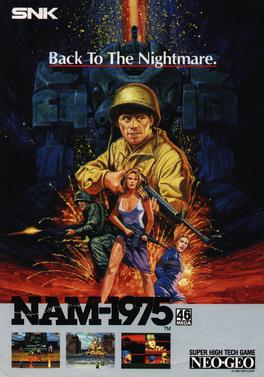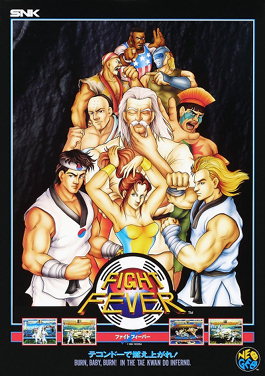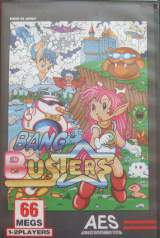In video games, a power-up is an object that adds temporary benefits or extra abilities to the player character as a game mechanic. This is in contrast to an item, which may or may not have a permanent benefit that can be used at any time chosen by the player. Although often collected directly through touch, power-ups can sometimes only be gained by collecting several related items, such as the floating letters of the word 'EXTEND' in Bubble Bobble. Well known examples of power-ups that have entered popular culture include the power pellets from Pac-Man and the Super Mushroom from Super Mario Bros., which ranked first in UGO Networks' Top 11 Video Game Powerups.

Art of Fighting is a fighting video game trilogy that were released for the Neo Geo platform in the early 1990s. It was the second fighting game franchise created by SNK, following the Fatal Fury series and is set in the same fictional universe as a prequel to the Fatal Fury series. The original Art of Fighting was released in 1992, followed by two sequels: Art of Fighting 2 in 1994 and Art of Fighting 3: The Path of the Warrior in 1996.

Geese Howard is a fictional boss character and the main villain in SNK's Fatal Fury fighting game series. Debuting in Fatal Fury: King of Fighters, Geese is the local crime boss of the fictional city of South Town. Geese created and hosts a fighting tournament named "The King of Fighters", in which he faces the brothers Terry and Andy Bogard who want to take revenge for their father's death. After several tournaments in the Fatal Fury series, Geese is killed by Terry in Real Bout Fatal Fury. However, he appears in following games without storyline as a "ghost" named Nightmare Geese. Geese has also appeared in other SNK's games such as The King of Fighters games, in which he seeks to get the power from the creature Orochi and often sends teams representing him. His young self makes an appearance in the second Art of Fighting game as the final boss character. He also appears as downloadable content in Bandai Namco's fighting game Tekken 7.

Snow Bros. is a 1990 platform arcade video game originally developed by Toaplan first published in Japan, then in North America by Romstar and later in Europe. Starring the eponymous snowmen twins Nick and Tom, players are tasked with travelling through 50 stages, throwing and building snowballs, jumping on and off platforms to navigate level obstacles while dodging and defeating monsters in order to rescue the princesses Puripuri and Puchipuchi from captivity. Although first launched in arcades, the game was later ported across multiple platforms, each one being created by different third-party developers and featuring several changes or additions compared with the original version. Conversions for various microcomputers were in development but none were officially released to the public.

Sengoku is a beat 'em up arcade game. It is the first entry of the Sengoku trilogy by SNK. It was ported to numerous home consoles including the Neo Geo, Neo Geo CD, Mega-CD and Super Famicom. The arcade version was part of SNK Arcade Classics Vol. 1, released in 2008. The Neo Geo version was re-released on the Japanese Virtual Console in 2011, with the sequels for the North American Virtual Console on November 8, 2012 and June 6, 2013 and for the PAL region on February 7, 2013 and September 5, 2013. In 2009 the series was compiled on the Sengoku Anthology for PlayStation 2 and Windows.

Twinkle Star Sprites is a competitive vertically scrolling shooter arcade video game created by ADK and published by SNK in 1996. It was ADK's last production for the Neo Geo. Two players are each in separate, side-by-side, vertically scrolling levels. Combinations of shots and timed power-ups damage the other player. These attacks also serve as counters to the opponent's attack.

Metal Slug is a Japanese multimedia franchise and run and gun video game series originally created by Nazca Corporation before merging with SNK in 1996 after the completion of the first game in the series. Spin-off games include a third-person shooter to commemorate the 10th anniversary of the series and a tower defense game for the mobile platform. Originally created for Neo-Geo arcade machines hardware (MVS) and the Neo-Geo home game consoles (AES) hardware, the original games have also been ported to other consoles and mobile platforms throughout the years, with several later games created for various other platforms. The games focus on the Peregrine Falcon Squad, a small group of soldiers who fight against a rebel army, aliens, zombies, mummies and various other forces intent on world domination.

Metal Slug 2 is a run and gun video game developed by SNK. It was originally released in 1998 for the Neo-Geo MVS arcade platform as the sequel to the 1996 game Metal Slug. The original version of the game had extensive slowdown and performance issues, eventually leading SNK to release a modified version in 1999 titled Metal Slug X: Super Vehicle-001 (メタルスラッグX). It has been ported to the Neo Geo CD, PlayStation, Virtual Console, iOS and Android, and to the Wii, PlayStation Portable and PlayStation 2. The game added several new features to the gameplay of the original Metal Slug, such as new weapons, vehicles and the ability to transform the character. It received generally positive reviews. It was followed by Metal Slug 3 released in 2000.

World Heroes is a series of four fighting games created originally by ADK with assistance from SNK for the Neo Geo family of arcade and home consoles.

Neo Geo Battle Coliseum, abbreviated NGBC or NBC, is a 2-on-2 tag team fighting game designed for the Atomiswave arcade board developed and released by SNK in 2005. The game features characters from several SNK and ADK titles. Subsequently, a PlayStation 2 version of the game was released in Japan, North America, and Europe. The Xbox Live Arcade version was released worldwide on June 9, 2010. In 2020, a homebrew conversion was released for the Dreamcast.

NAM-1975 is a war shooting gallery arcade video game developed and originally published by SNK on April 26, 1990. It was one of the launch titles for both the Neo Geo MVS (arcade) and Neo Geo AES (home) platforms, in addition to being the only title in the system that does not feature the Neo Geo boot screen in its attract mode, as well as one of the pack-in games for the AES.

Alpha Mission II is a vertically scrolling full screen shoot 'em up released by SNK in 1991 for the Neo Geo arcade and home systems. It is the sequel to the 1985 arcade game Alpha Mission. It was later released for the Neo Geo CD in 1994 and for the PlayStation Portable in 2010.

Windjammers is a sports arcade game released by Data East on the Neo Geo arcade system in 1994. The game mechanics are essentially the same as Pong or air hockey, where players continuously shoot the disc at the goal zone of the opponent attempting to score. The game can be played against the computer or in a 2 player versus. Dotemu ported the game to PlayStation 4 and PlayStation Vita in August 2017, Nintendo Switch in October 2018, and iiRcade in February 2021. Dotemu would later develop and publish a sequel, Windjammers 2, which was released on PlayStation 4, Xbox One, Nintendo Switch, PC and Google Stadia on January 20, 2022.

Pulstar is a horizontally scrolling shooter released for arcades by SNK in 1995. Players control a starship in its mission to eradicate the Solar System of a hostile race of aliens that threaten mankind. Its gameplay has been compared to the R-Type series for its similar premise and mechanics; players must complete each of the game's eight stages by destroying constantly-moving formations of enemies and avoiding their projectiles. There are power-ups that can be collected that provide additional abilities for the player. It runs on the Neo Geo MVS arcade system board.
ADK Corporation, formerly known as Alpha Denshi Corporation (アルファ電子株式会社), was a Japanese video game developer founded in 1980. ADK began as a developer of arcade games and is best known for their library of SNK Neo Geo titles, including for its home consoles, produced in partnership with SNK. Most notable among these are their fighting games and, in particular, the World Heroes series and Aggressors of Dark Kombat. The company closed with properties sold to SNK Playmore in 2003.

Fight Fever is a 1994 2D fighting video game for the Neo-Geo MVS System. It is the first Korean Neo Geo title ever officially released, as well as the first game developed and released by Korean publisher of SNK games, Viccom (빅콤). A port for the Neo Geo CD was also showcased but never released.

Zed Blade is a horizontally scrolling shooter arcade video game developed by NMK and originally published by SNK on September 13, 1994. It is the only game created by NMK for the Neo Geo arcade platform. In a science fiction setting, players choose one of three characters to attempt to overthrow an army of enemies led by the on-board supercomputer at the automated Yggdrasil space station and seize full control of it once again.

Paon DP Co., Ltd. (株式会社パオン・ディーピー) is a Japanese video game developer. The company was founded in August 2004 as DP Inc. and merged with Paon Corporation, Ltd. in March 2015 to form Paon DP.

Bang Bang Busters is a 2010 platform video game developed by Visco Corporation and originally published by Neo Conception International for the Neo Geo AES (home). Taking place on the fictional planet of Palua in the future, where an evil being known as Honey plots to have his own galaxy, players assume the role of Lazy and Refia in order to prevent Honey and his followers from realizing their plan. Its gameplay mainly consists of platforming mixed with action elements using a main two-button configuration.

ZuPaPa! is a platform arcade video game developed by Face and originally published by SNK on September 1, 2001. Starring the eponymous creature, players are tasked with travelling through nine stages, throwing small creatures called Zooks, jumping on and off platforms to navigate level obstacles while dodging and defeating monsters. Although first launched in arcades, the game has been re-released through download services for various consoles. The title has gained a cult following since its initial release.


















